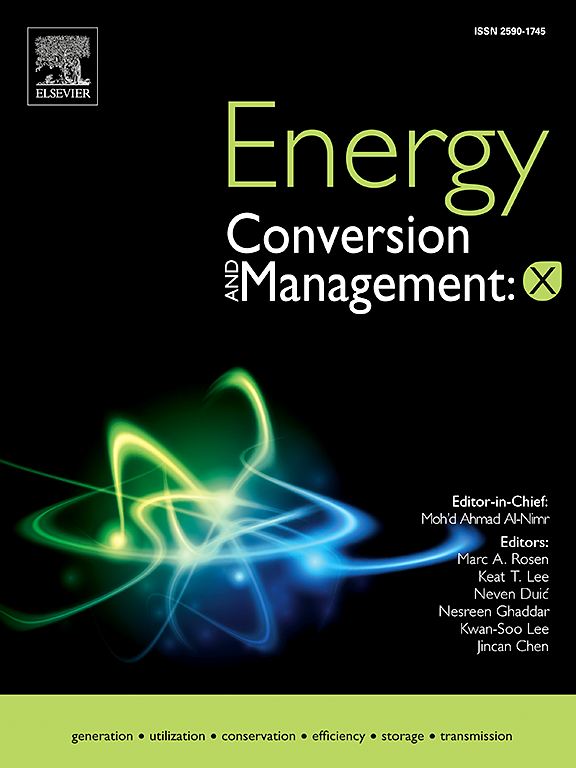Enhancement of charging time in a shell-and-tube latent heat storage system using innovative inner-tube motion profiles: A numerical study
IF 7.1
Q1 ENERGY & FUELS
引用次数: 0
Abstract
This study investigates the enhancement of charging efficiency in a PCM-based thermal storage system by introducing innovative motion profiles for the inner cylinder within a shell-and-tube heat exchanger. Ten motion scenarios, including oscillatory and constant velocity profiles, are numerically analyzed to improve heat transfer and reduce melting time. The results demonstrate that targeted motion profiles, particularly those focusing on the lower region of the domain where free convection is weak, significantly enhance charging efficiency. Among the oscillatory profiles, Profile A (inner cylinder oscillation in the lower half of the casing) achieves a 32 % reduction in melting time, while Profile J (leftward motion followed by counterclockwise rotation) achieves the highest improvement of 61%. The study highlights the importance of optimizing inner tube movement to target inactive regions, leading to more efficient heat transfer and faster charging. These findings provide valuable insights for the design of next-generation thermal energy storage systems, with potential applications in solar energy storage and thermal management of heat-intensive systems.

求助全文
约1分钟内获得全文
求助全文
来源期刊

Energy Conversion and Management-X
Multiple-
CiteScore
8.80
自引率
3.20%
发文量
180
审稿时长
58 days
期刊介绍:
Energy Conversion and Management: X is the open access extension of the reputable journal Energy Conversion and Management, serving as a platform for interdisciplinary research on a wide array of critical energy subjects. The journal is dedicated to publishing original contributions and in-depth technical review articles that present groundbreaking research on topics spanning energy generation, utilization, conversion, storage, transmission, conservation, management, and sustainability.
The scope of Energy Conversion and Management: X encompasses various forms of energy, including mechanical, thermal, nuclear, chemical, electromagnetic, magnetic, and electric energy. It addresses all known energy resources, highlighting both conventional sources like fossil fuels and nuclear power, as well as renewable resources such as solar, biomass, hydro, wind, geothermal, and ocean energy.
 求助内容:
求助内容: 应助结果提醒方式:
应助结果提醒方式:


